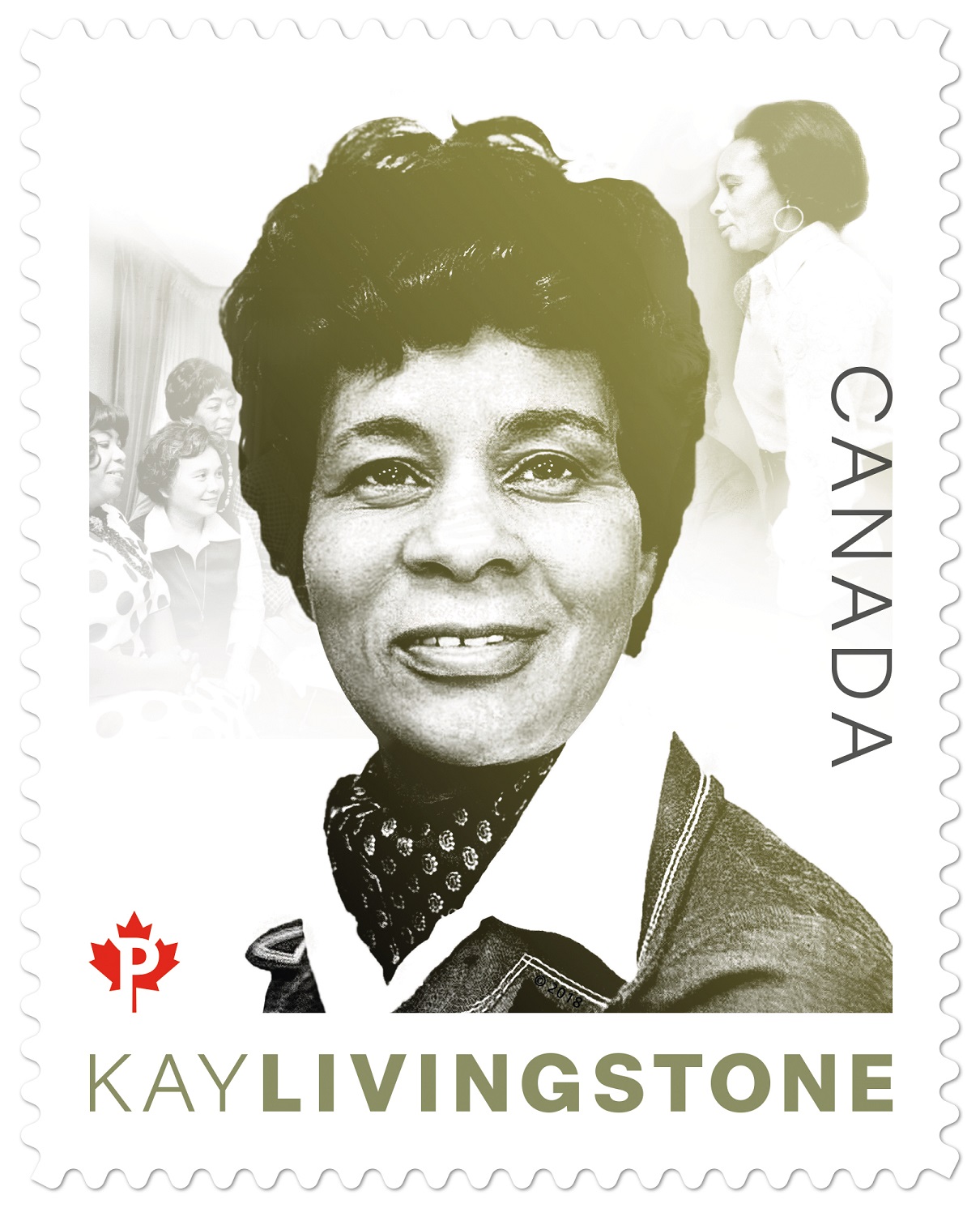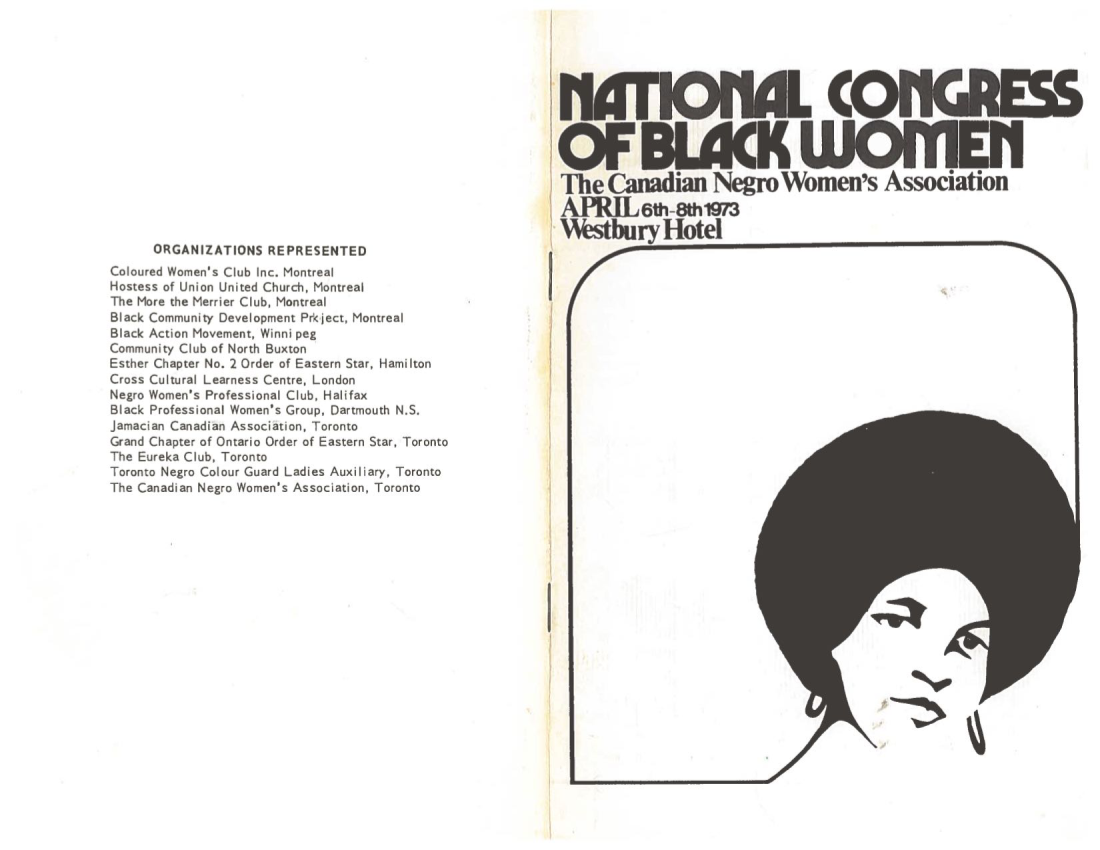Kathleen (Kay) Livingstone (née Jenkins), organizer and activist, broadcaster, actor (born 13 October 1919 in London, ON; died 25 July 1975). Kay Livingstone founded the Canadian Negro Women’s Association in 1951 and organized the first National Congress of Black Women in 1973. An established radio broadcaster and actor, Livingstone also devoted a great deal of her life and energy to social activism and organizing. Her tireless work to encourage a national discussion around the position of racialized people in society, particularly Black women, led Livingstone to coin the term visible minority in 1975.

Early Life and Career
Kay Livingstone was one of eight children of James and Christina Jenkins. James Jenkins was an assistant judge in London, Ontario’s juvenile court. He and Christina published The Dawn of Tomorrow newspaper, which served the Black community. When James Jenkins died in 1931, Christina and her children continued publishing the newspaper.
Kay Livingstone showed an early interest in the performing arts and went on to study at the Royal Conservatory of Music in Toronto and the Ottawa College of Music, where she studied elocution.
During the Second World War, Livingstone worked for the Dominion Bureau of Statistics in Ottawa.
While living in Ottawa, Livingstone started a radio program called The Kathleen Livingstone Show. After moving to Toronto, she continued to host radio shows for several stations, including the CBC. During this time, Livingstone worked as an amateur and professional film and television actress, work she continued for many years.
Canadian Negro Women’s Association
In Toronto, Kay Livingstone joined a small social club for middle-class Black women called the Dilettantes, which organized tea and garden parties. Soon after joining in 1950, Livingstone helped change the group’s name and mandate, establishing in 1951 the Canadian Negro Women’s Club (later, the Canadian Negro Women’s Association, CANEWA). Livingstone was elected CANEWA’s first president and served until 1953. CANEWA’s mandate was “to become aware of, to appreciate, and further the merits” of Black Canadians.
Under Livingstone’s leadership, CANEWA launched a scholarship program for Black students, hosted fundraising events such as Calypso Carnival (a precursor to Toronto Caribbean Carnival) and Negro History Week (later Black History Month).
DID YOU KNOW?
On 13 February 1950, Stanley G. Grizzle, president of the Toronto CPR division of the Brotherhood of Sleeping Car Porters, hosted the first celebration of Negro History Week in Canada at Toronto’s British Methodist Episcopal Church. The event is believed to have been the first in Canada. It included three speakers, including Grizzle, Rev. Stewart and Kay Livingstone. The following year, Livingstone established the Canadian Negro Women’s Association (now the Congress of Black Women of Canada), which continued to organize Black History Week events for many years.

Congress of Black Women of Canada
In 1973, Kay Livingstone organized and chaired the first National Congress of Black Women of Canada (CBWC) in Toronto, which was sponsored by CANEWA. The CBWC brought together 200 Black women from across Canada and included the Coloured Women’s Club from Montreal, the Black Professional Women’s Group from Dartmouth and the Black Action Movement from Winnipeg, among other organizations. The purpose of the CBWC was to create a national network for Black women to discuss common concerns and share ideas. The three-day event included guest speakers from across the country who led seminars and workshops on such subjects as education, immigration, single parenthood and the portrayal of Black people in the media.
After a series of conferences in cities across Canada, the CBWC became a national organization in 1980, and chapters were formed cross the country. In 1992, the CBWC established a foundation that “promotes and facilitates activities and model programs which foster advancement, recognition, history, and education of black women and their families.”
Later Life and Career
In later life, Kay Livingstone worked as a consultant for the Privy Council of Canada. Her work there involved travelling the country and speaking with women’s groups in preparation for a national conference on racialized communities in Canada. Livingstone is often credited with coining the term visible minority while working on this project. According to author Marcia Wharton-Zaretsky, the term “became an organizing tool [CANEWA] members could use to challenge unfair institutional practices in education, policing and immigration. Although the term has become a contentious issue today, at the time… it was seen as a ‘radical’ descriptor of their location in Canadian society.”
While in the process of planning the conference, Livingstone died suddenly on 25 July 1975.
Personal Life
In 1942, Kay Livingstone married George Livingstone. The couple had two daughters and three sons.
Legacy
After Kay Livingstone’s death, broadcaster and publisher Carrie Best, who met Livingstone in 1975, established the Kay Livingstone Visible Minority Women’s Society, which provided scholarships to young women. The Congress of Black Women of Canada awards the Kay Livingstone Memorial Award scholarship.
Livingstone was designated a Person of National Historic Significance by the Canadian government in 2011. In November 2017, the Historic Sites and Monument Board of Canada erected a plaque dedicated to Livingstone at a park on Bedford Park Avenue in Toronto. The following year, during Black History Month, Canada Post released a stamp depicting Kay Livingstone.

 Share on Facebook
Share on Facebook Share on X
Share on X Share by Email
Share by Email Share on Google Classroom
Share on Google Classroom




